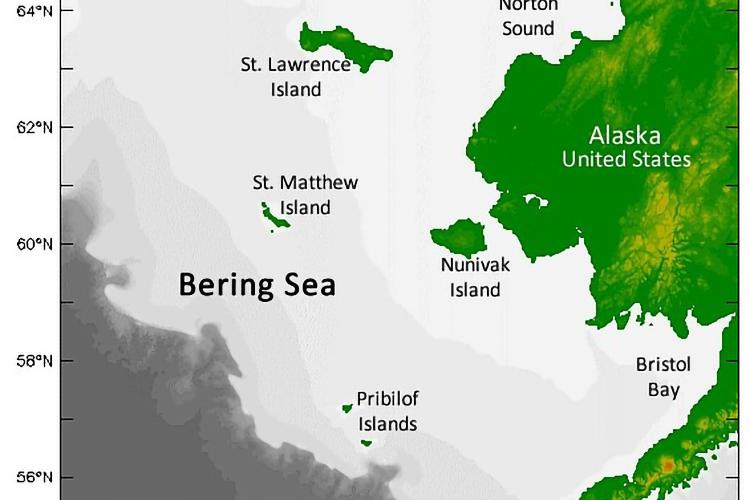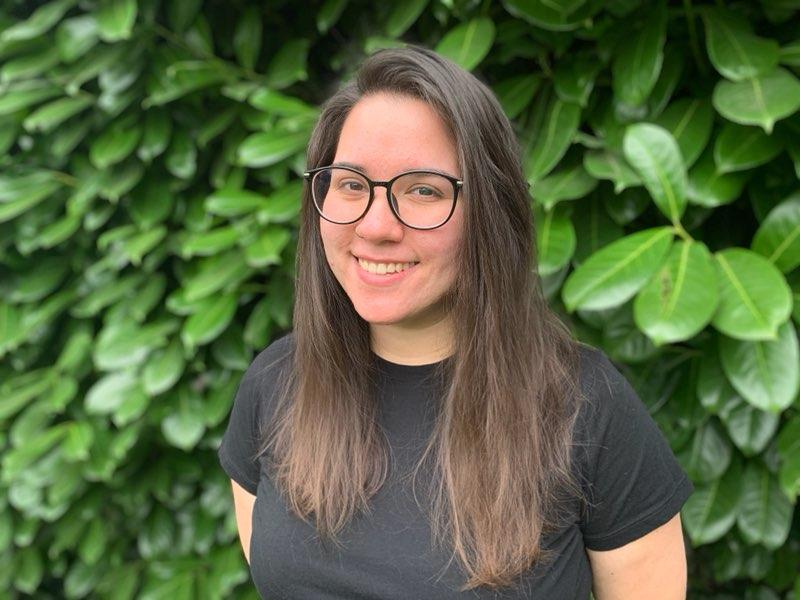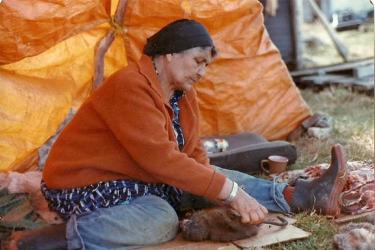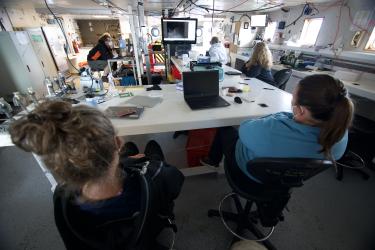During my internship with NOAA, I’ve had the chance to take a deeper dive and meet the people behind the project. While their individual research and contributions to the project are a large component of their passions, the parts of our conversations I enjoyed most focused on what drew them and kept them at NOAA, fisheries, and ACLIM.
Anne Hollowed
Of the many people I talked to, I was fortunate to have a chance to speak with Dr. Anne Hollowed before she retires later this year. A Senior Scientist with NOAA and principal investigator (PI) in ACLIM, her research focuses on the effects of climate and ecosystem change on the current and future status of fish and fisheries. She worked on research in the Bering Sea prior to ACLIM. She emphasized how similar high-latitude ecosystems are, their vulnerability and potential to be impacted by a changing climate earlier and more severely than other parts of the globe.
Dr. Hollowed has been an advocate for the ocean and science since childhood. She spent her summers discovering nature, guided by her chemist mother. To further her passion, she pursued biology in college. Her enthusiasm for the future of science and ocean ecosystems are nothing short of a lifelong predilection.
When I asked how her love of science and ocean life extended into ACLIM, Anne reminisced on the beginnings of the project. She distinctly remembers the ‘happy dance’ that ensued when she received news of her research proposal acceptance. Remembering the elation of hearing the project would be funded, Anne added that she hopes all future scientists have their own ‘happy dance’ moment.
“That’s really the ticket, as you’re working with young scientists… It’s not to just jump in and say ‘Well, this is how it all works.’ You just keep asking questions until they see it themselves. That part is so rewarding when they suddenly have that moment that you know you enjoyed when you were younger.” - Anne Hollowed
Andre Punt
At the University of Washington (UW), Andre Punt is an applied mathematician working as the UW PI for ACLIM. His work focuses on impacts of climate on fish populations, and how these impacts affect management. Utilizing multiple mathematical models, Andre works to develop ways to integrate different models to synthesize results.
...guiding decision makers through his research and making a difference in managing oceans is a main driver in his work.
The research Andre and his lab implement directly influences ocean management in Alaska and along the West coast, and even internationally in Australia. Andre talked about how guiding decision makers through his research and making a difference in managing oceans is a main driver in his work. He enjoys being a part of a larger change. Although he wasn’t drawn to fisheries through a childhood passion, it was obvious that he is genuine and authentic about his work and its impact.
Jim Ianelli
Another Senior Scientist at NOAA, Jim Ianelli works on stock assessments for the Bering Sea and Gulf of Alaska. Taking scientific data collected by at-sea observers on fishing boats and scientific surveys, Jim estimates fish abundances and observes trends in increasing or decreasing federally-managed fish and crab stocks. He and his team use this data to make recommendations based on stock productivity for future fishing catch levels.
After working in the South Pacific, he realized he immensely enjoyed spending his time on the water working on marine issues. His fascination with the complexity of fisheries and the spectrum of people he’s met drive him to continue his work today.
Essentially, Jim identifies the biological limits for fishing activities. Like Anne, Jim spent his time growing up around water, specifically on boats on the open ocean. After working in the South Pacific, he realized he immensely enjoyed spending his time on the water working on marine issues. His fascination with the complexity of fisheries and the spectrum of people he’s met drive him to continue his work today.
Shared Values
Anne, Andre, and Jim are just a few of the faces behind ACLIM. Despite the diversity of expertise participating in ACLIM, my conversations with everyone often identified a shared appreciation for: the project’s integrative approach.
Several scientists stressed the value of this interdisciplinary approach to their own research. They emphasized that it is both exciting and challenging.






